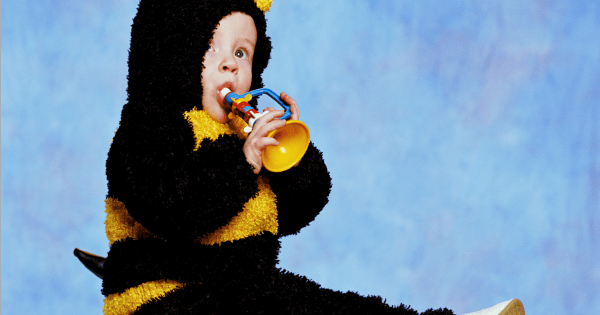The 10 body parts, behaviours and reflexes we don't actually need.

We all have something we claim we couldn’t live without — chocolate, travel, Netflix… you name it.
But it seems we all have more than a few body parts we could definitely get by without.
So let’s take a dive into the world of vestigial organs and body parts; that is, the ones we needed to function thousands of years ago, but are no longer necessary today.
1. Appendix
The appendix is a tiny pouch located where the small and large intestines meet. According to Dr Andrew Rochford, who recently spoke to radio duo Fitzy and Wippa about redundant body parts, it was designed to digest certain plant materials that we no longer eat.
Now, due to evolution, we no longer need it; it’s simply a surplus organ. Though anyone who has suffered from appendicitis will attest it’s very good at becoming inflamed, infected and then rupturing.
Watch: One body part that’s actually useful? Your vagina. Here are some facts you mightn’t know about it. (Post continues after video.)
2. Male nipples
We all begin as women in the womb. It’s only after 60 days that, for those with the Y chromosome, testosterone kicks in and changes the genetic activity in the brain and genitals.
Nipples are one inherited trait men just so happen to keep. Despite serving no real purpose, these features do no harm, and therefore have not been weeded out by natural selection.
But that doesn’t mean we should be taking matters into our own hands. Take 18-year-old Spanish-Moroccan ‘artist’ Karim Boumjimar, for instance, who cut off his nipples and belly button and sold them online (#edgy). PSA: Do not try this at home.
Image via Twitter.
3. Muscles behind the ear
Unless you're the cool kid in primary school who can wiggle their ears, these muscles serve no purpose.
In fact, we humans haven't used them since we were prey to wild animals. Back then, these muscles would have allowed our ancestors to pivot their ears in different directions to locate sounds. Biologist Charles Darwin claimed the need for these muscles were compensated for when humans began to position their heads to capture sound.
(Image via GIPHY.)
4. Sinuses
These are small hollow air pockets in your nose that can give you a shocking headache. Whether they have other uses is debatable.
"They don’t really know why we’ve got those. I mean, it makes sense for people with heavy heads because it makes their head lighter, but they don’t really know," Dr Rochford told Fitzy and Wippa.
Upon research, however, the sinuses would seem to serve many functions. They first filter and humidify the air we breathe, and also protect our vital structures in trauma situations, functioning as crumple zones. But you won't be appreciating all that when you've got a stuffed nose.

Image: iStock
5. Earlobes
Earlobes come from the days when we were the prey and would have to listen out for wild animals. The job of the outer ear, or the 'auricle', is to direct sounds into the ear, and the earlobe is not essential to this task. Holding earrings, on the other hand...

Image: iStock
6. Palmar grasp
Behaviours can also be vestigial. The palmar grasp reflex is found only in babies, stemming back to when children clung to their parents' backs and gripped onto their long body hair for safety.
That grip is strong enough to hold an infant's entire body weight (impressive, huh?) and disappears after about six months of life.
Check out our favourite characters use their bodies to dance. (Post continues after gallery.)
Epic dance scenes from some of our favourite characters

7. Goosebumps
Goosebumps are the work of the small erector pili muscles that move your hair when you get cold. For mammal animals, this action provided insulation and warmth and made them look larger and more imposing in the face of a predator. For us humans, though, it just results in bumpy skin.

Image: iStock
8. Tonsils
Tonsils are a part of the immune system, and create antibodies and white blood cells which attack germs inside the mouth. This makes them part of your first line of defence against bacteria in air or food, so they are certainly useful in fighting respiratory infections.
That said, you can certainly survive without tonsils. Many of us have our tonsils removed when we're young, as a result of repeated episodes of sore throats, a hindered breathing and inflammation. Doing so can reduce snoring and pain. (Post continues after gallery.)
Tips to beat a cold
9. Belly button
Once a baby is born, it does not need the umbilical cord that attached it to its mother for nutrients and oxygen. After it's removed, the stump falls off to reveal the belly button.
It's totally redundant... unless you count the fact you can make cheese from belly button germs. Mmm, delicious. Your very own fromagerie.

(Image via iStock.)
10. Tailbone
We were all dragons once! OK, not really — but between week five and eight of conception humans do begin to form a tail.
However, unlike dolphin, elephant and dog embryos, white blood cells in the human embryo will dissolve the growth by week 12. Sometimes, though, babies can be born with a vestigial tail.

Kind of like this. (Image via iStock.)
How many of these did you know?
Featured image: iStock.

